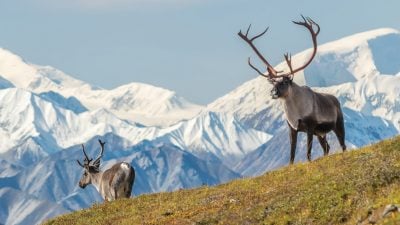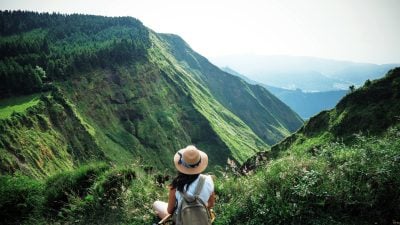Home / Latin America & Antarctica / Top Natural Beauty Spots to Se…
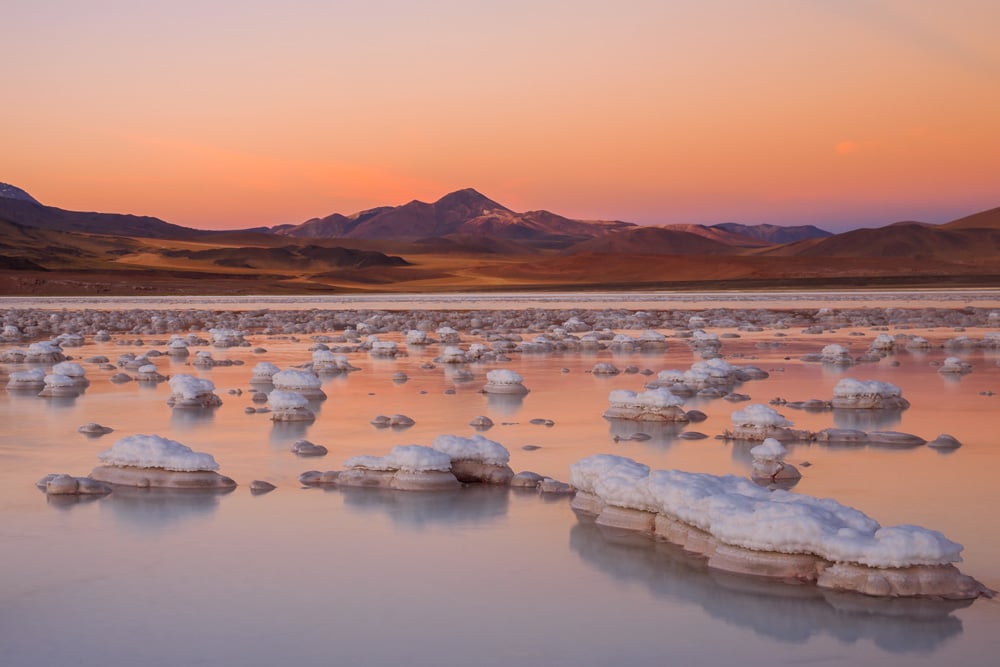
Top Natural Beauty Spots to See on Central and South American Vacations
Our world is an attractive place to experience. Here are my choices of 5 special scenic locations on Central and South American vacations, offered in Goway’s world. Each one consists of natural beauty and is exceptional.
I am well aware that my choices will not be the next person’s. However, I challenge anyone to disagree with the merits of the following (restricted to 5).
Machu Picchu, Peru
Apart from the very important and fascinating historical and archaeological significance of this site in Peru, the location in which Machu Picchu is situated is scenically breathtaking, and I don’t use that word lightly. First, it stands 2430 metres/7970 feet above sea level on the crest of a mountain. The ruins lie on a high ridge surrounded on three sides by the Urubamba River some 610 metres/2000 feet below. On South American vacations to Peru, there are 3 ways to consider getting to Machu Picchu from Cusco. The first is by train to the nearest settlement, Aguas Calientes, a small town at the foot of the mountain. The second is to consider a bus journey to Ollantaytambo, well worth a stopover given its interesting Inca ruins, then the train to Aguas Calientes. The third is to take the 4-Day Inca Trail Trek. It is highly recommended to stay in Aguas Calientes overnight, then visit the site first thing in the morning to avoid the crowds.
Machu Picchu is a complex of palaces and plazas, temples and homes, and may have been built as a ceremonial site, a military stronghold, or a retreat for ruling elites during the Inca civilization, at its height around 1450 AD. In the Quechua Indian language, Machu Picchu means “old peak” or “old mountain.” The city was made of cut stone fitted together (without mortar) so tightly that its cracks still can’t be penetrated by a knife blade. Scholars are still striving to uncover clues to the mysteries hidden here. Many landmarks, both man-made and natural, appear to align with astronomical events such as the solstice sunset.
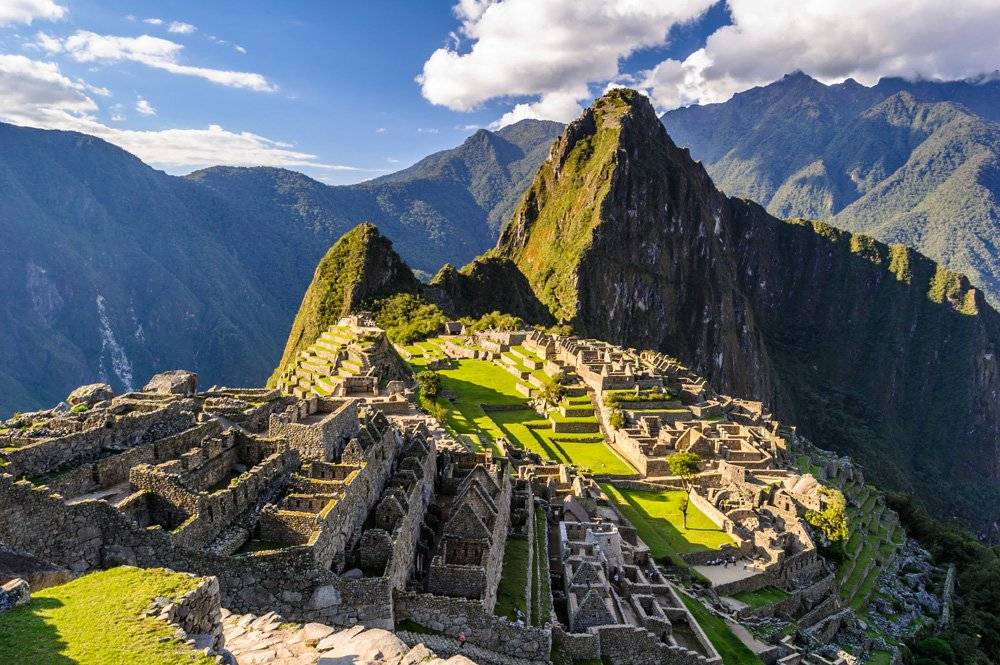
Corcovado, Rio de Janeiro, Brazil
To put it simply, this is one of the most outstandingly beautiful places I have ever encountered on Central and South American vacations. Imagine being on the Atlantic Ocean coast in Rio de Janeiro on a trip to Brazil and looking up – way up – and seeing an enormous statue, 100 feet/30 metres high, of Christ the Redeemer with its outstretched arms welcoming the world. This statue is several kilometres/miles above your gaze and will absolutely enchant you. It sits on top of Corcovado Mountain, 700 metres/2280 feet above the ocean. From the top of the mountain looking down, you have a view of the city and the coastline which are again spectacular. You can have a bird’s eye view of all the famous beaches such as Ipanema and Copacabana, plus Sugarloaf Mountain and the Maracana Soccer Stadium.
How do you get to the top of Corcovado? You can climb up, but this is only suitable for avid climbers. You can take a train from Rio. You can take a bus to the back of the mountain and walk up – which I have done – or you can simply take a tour excursion on Brazil tours.

Iguassu Falls, Argentina and Brazil
Technically, this waterfall is shared by three different countries – Argentina, Brazil, and Paraguay. However, just about all visitors will view it from Argentina and/or Brazil. It is 2.7 kilometres/1.7 miles long and has 275 individual water cascades. Iguassu Falls (or as the Argentineans call it, Iguazu Falls) has the largest average annual flow of water, more than any other waterfall in the world. If you measure the surface water flowing over the entire falls, it is double that of Niagara Falls. You have a choice of staying on the Argentina or Brazil side. Both Argentina’s Puerto Iguazu and Brazil’s Foz do Iguacu have a good selection of accommodation. I highly recommend spending at least a day on each side of Iguassu. About three-quarters of the total length of the falls are on the Argentinean side. The most impressive part of the falls is called Devil’s Throat,” shared between both sides. It is a U-shaped cataract and half the river’s flow falls into it. You will see a huge amount of mist, which can be seen from afar, and hear the roar of the water pouring down.
You can take a train running along the Argentinean side to where the mist and the roar are the most spectacular. Also, you can walk to Devil’s Throat and take a boat ride underneath the falling waters. While the falls are farther away, you can get a better overview of them from the Brazilian side. From virtually every angle, the views are definitely extremely panoramic. If you want a totally different experience on your Central and South America vacation, consider the 10-minute helicopter ride from the Brazilian side. What you get is a bird’s eye view of not only the falls but also the surrounding rainforest.
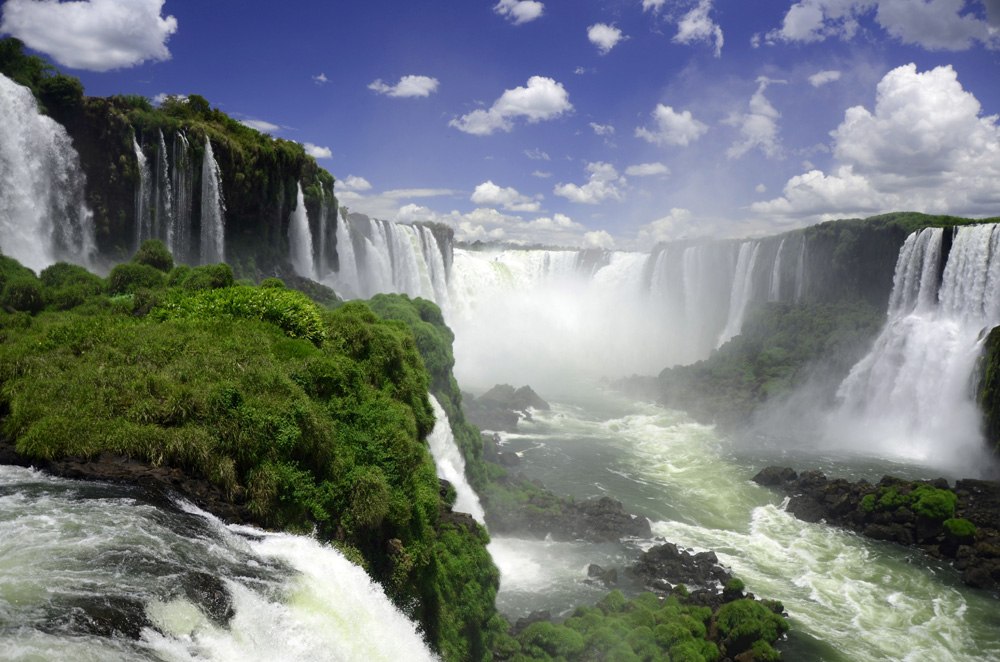
Atacama Desert, Chile
The Atacama Desert covers a strip of land which is 1000 kilometres/620 miles long on the Pacific coast of Chile, west of the Andes Mountains. It is known as the driest place in the world with some areas having no recorded incidence of rain. However, there are two rivers that are fed by snow from the Andes which create numerous oases throughout the desert. So why visit a dry desert on South American vacations to Chile, you ask? Some of the spectacular landscapes are breathtaking. There is exceptional nature in the form of salt flats, lagoons, volcanoes, natural hot springs, and geysers. There is also a rich variety of flora with over 500 different species. The night sky is beyond belief and has been recognized as the clearest sky anywhere. In fact, several countries have set up observatories here to study astronomy.
The Aymara indigenous community, which still prevails in small concentrations here, lives in quiet, cozy villages. Your best bet is to stay at one of the excellent lodges and partake in some of the numerous activities available. Not all activities need to be strenuous. You can participate in 4 wheel drive tours of the area or simply relax at a lodge. One activity to consider is a hot air balloon ride over Atacama. You can do this from the town of San Pedro de Atacama. It includes a trip over the Licancabur cone-shaped volcano, part of the majestic Andes mountain range, and Moon Valley. At sunrise, you can experience a rainbow of different colours, from red to burnt orange and blue.
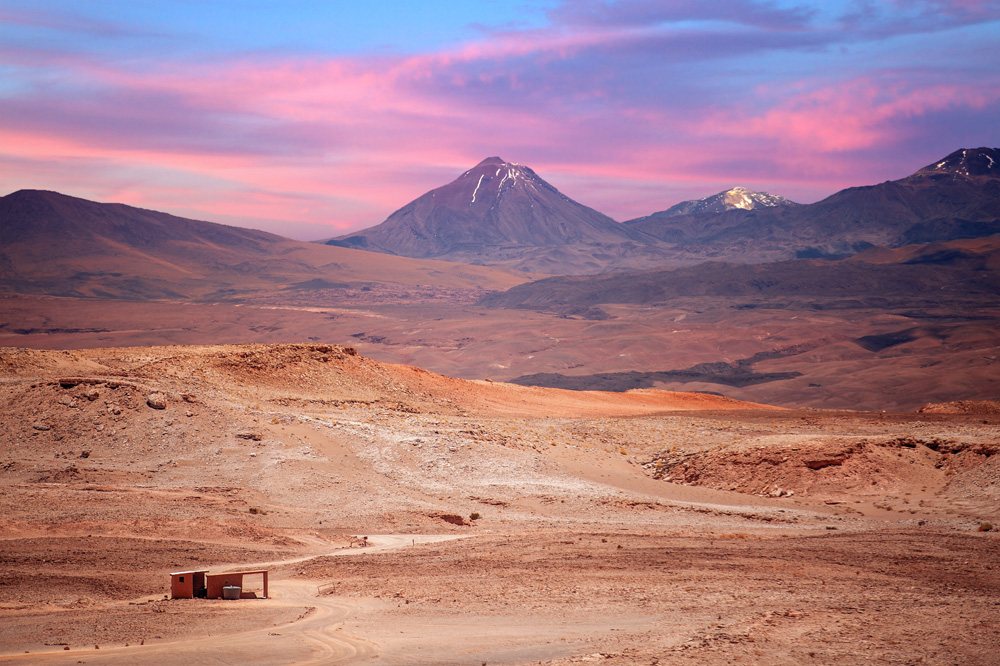
Volcanoes in Costa Rica
Costa Rica contains over 60 volcanoes which are considered extinct or dormant plus 6 which are still active. So, if you are planning a Costa Rica vacation and would like to see magnificent volcanoes, try one or all of the following. The volcano in the Arenal Volcano National Park was the most active in the country. It had previously been believed to be dormant until a major eruption in 1968. One of the world’s most active volcanoes, it stands more than 1550 metres/5000 feet high. Frequent eruptions continued until 2010 when the volcano re-entered a non-active state. It towers over the surrounding fertile landscape surrounded by plantations producing coffee. On a hot air balloon ride, there often needs to be a break in the clouds to view the volcano, but even with clouds, it is possible when flying over it to look down into its crater.
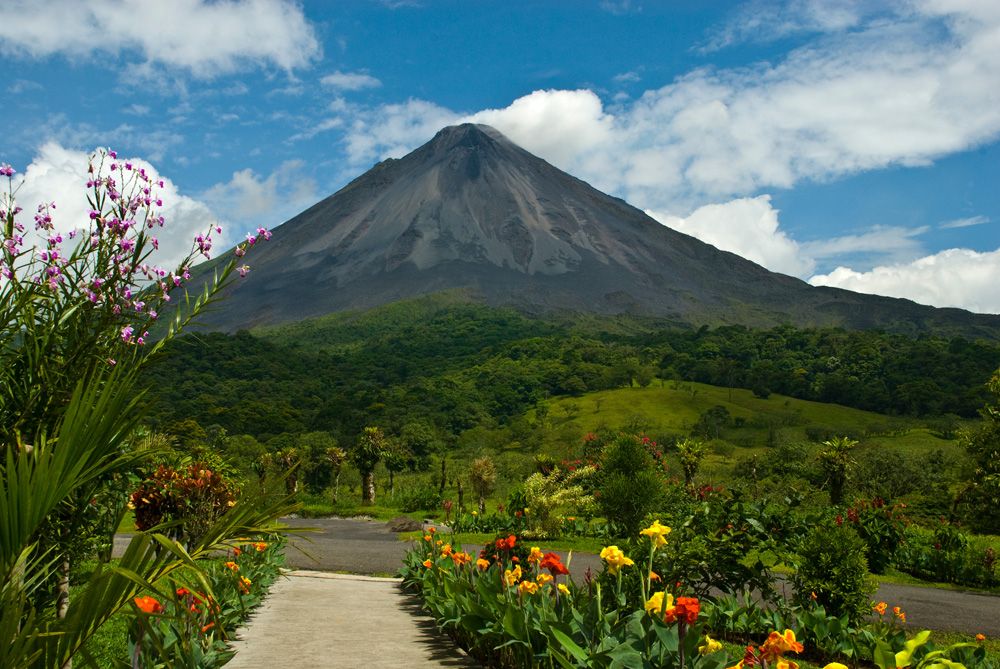
Rincon de la Viejo translates as “The old woman’s corner,” supposedly named after a witch by indigenous tribe people. It is an inactive volcano at present, standing 1915 metres/6290 feet above sea level. The volcano, one of six active volcanoes in Costa Rica, has a large number of hot pools and areas of bubbling mud areas on its slopes, indicating substantial reserves of geothermal energy. Access to the crater is no longer available due to an eruption in 2016 when volcanic ash and mud rose from the crater lagoon. Several lodges, resorts, and hotels in the area offer hiking, forest canopy tours, horseback riding, river-rafting, all-terrain-vehicle riding, and wall-climbing.
The Poas Volcano is located in the Central Valley and is one of the world’s largest active volcanoes, with sulphuric emissions, active fumaroles, and two crater lakes. The crater of the volcano is over a 1.5 kilometres/1 mile across and 323 metres/1050 feet deep. Two small lakes at the bottom formed when craters filled with rainwater. The northern lake, called the Laguna Caliente (hot lagoon) is one of the world’s most acidic lakes.
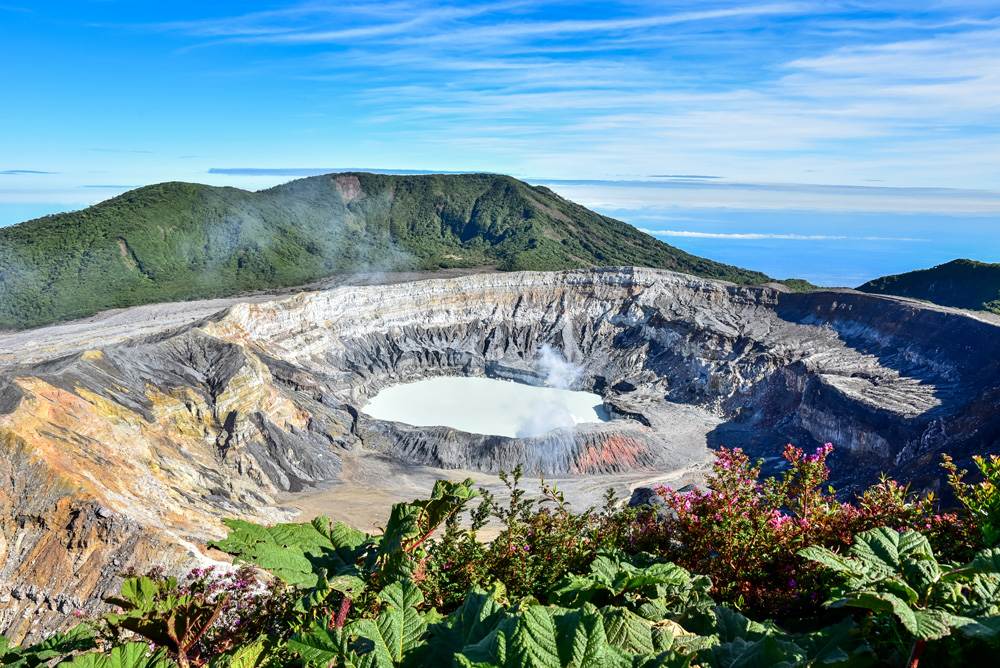
Get more travel inspiration by email.
Subscribe
0 Comments

Get the latest travel trends & hear about the best deals on vacations around the world.
If you’re a Globetrotter, these are the newsletters for you!
